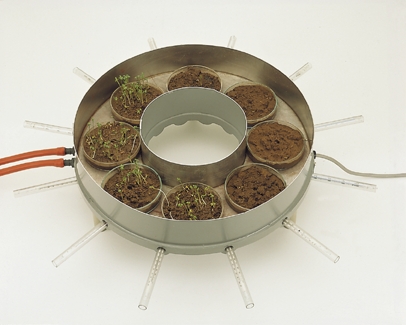Principle
Genetically determined growth processes in plants are primarily triggered or inhibited by special phytohormones. However, external factors such as light, temperature, water, oxygen and air humidity play a decisive role in these processes. With
regard to temperature, there are ranges within which this environmental factor reaches the most favourable value for germination and growth of a plant (preferential or optimum range, preferendum). The effect of different temperatures on the growth of cress (pepper grass, Lepidium sativum) is analysed in this experiment.
Benefits
- Precise measurement possible with 12 different temperatures
- Allows to set up a wide temperature range
- The ring-shaped measurement setup allows an even distribution of all temperature points
- Experimental setup can also be used for animal experiments
Tasks
- Investigate the effect of soil temperature on the germination of garden cress (Lepidium sativum)
- Determine the most favourable value for the germination and growth of cress using a temperature organ.
Learning objectives
- Plant germination
- Temperature optimum/ maximum/ minimum
- Soil temperature
- Temperature preferendum
As the experiment lasts for several days, the use of a cold-heat circulator (cooling thermostat) is strongly recommended. A conventional circulator is not sufficient for the experiment.

